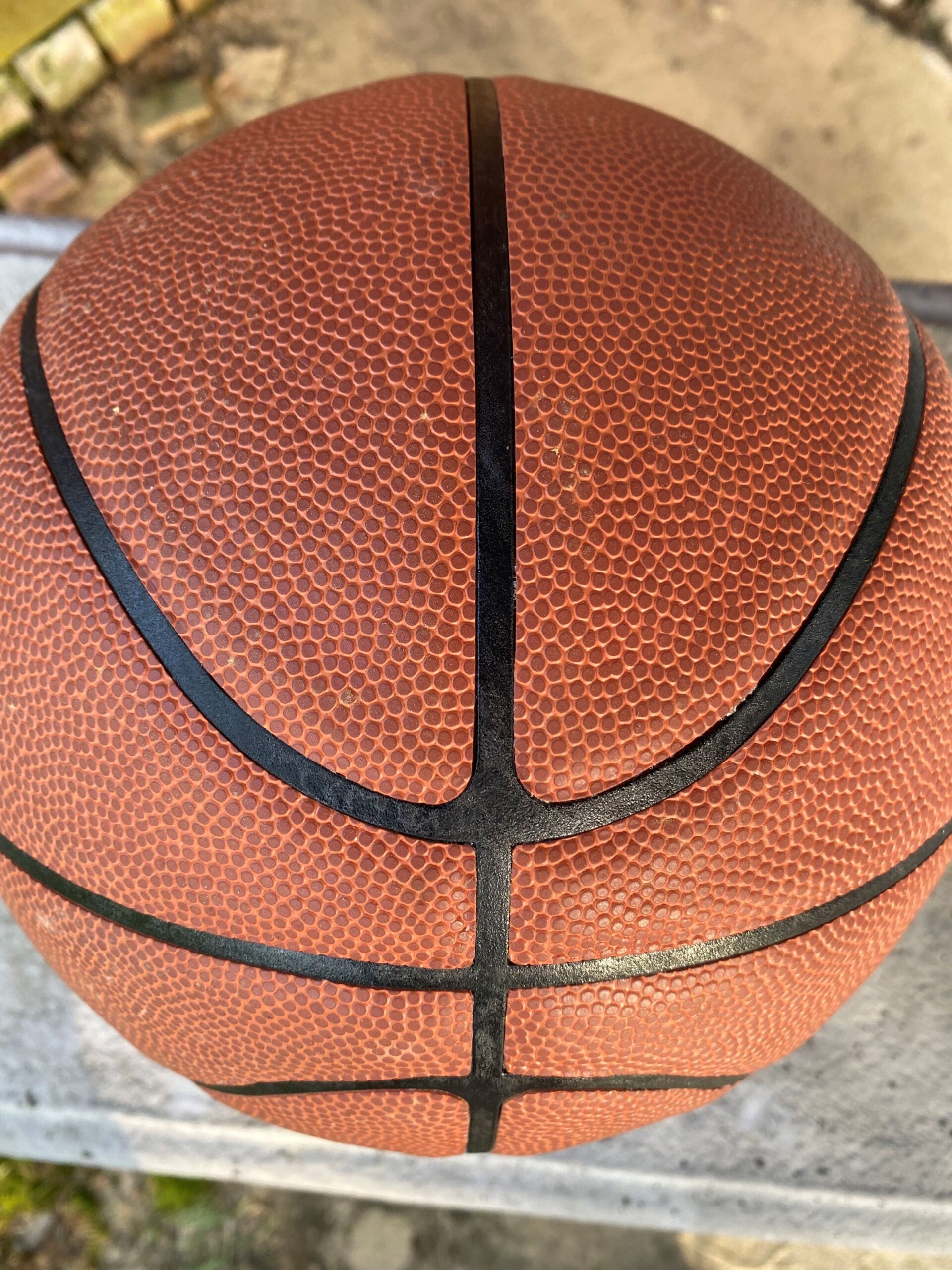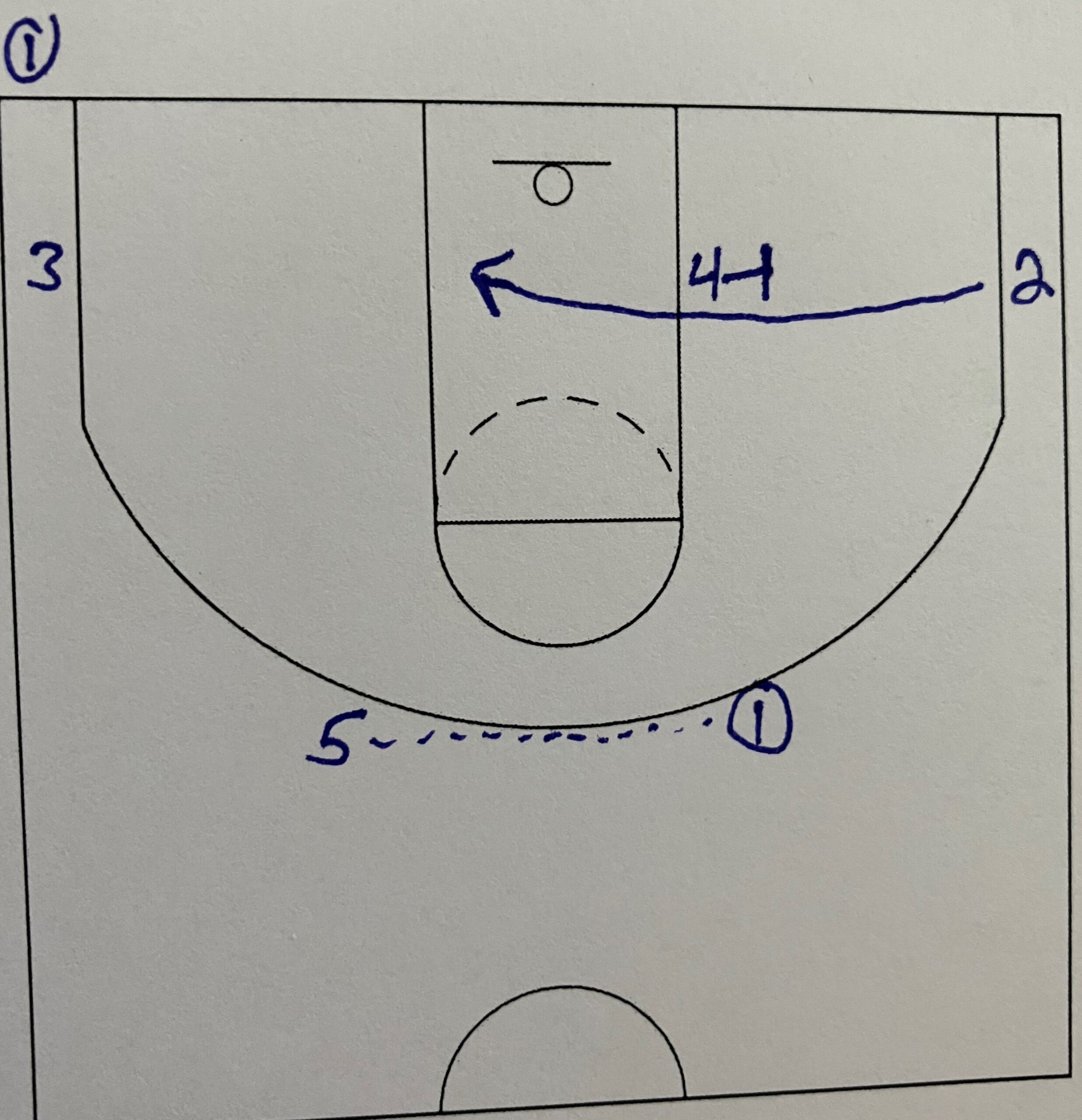This is an offense that is based on having a continuous ball screen. The offense is designed where one ball screen will lead straight into another ball screen. This ball screen action continues for the entire possession.
This motion offense is great to use in two different scenarios. The first is if a team has 3 guards who can all drive the ball. The other two players are going to be the screeners. The two screeners can be just about anybody. It is a positive if these other 2 players are good screeners who can finish around the rim. The screeners are going to be picking and rolling constantly. If a screener can finish around the basket then it is an added bonus.
The other scenario is when an offense is playing a team who does not guard the pick and roll well. Or has bigs that struggle guarding on the perimeter. This offense will force the bigs of the defense to constantly be running out to the 3 point line and having to guard. If the bigs do not guard, then the offense should be able to get layups or wide open jump shots coming off the screen.
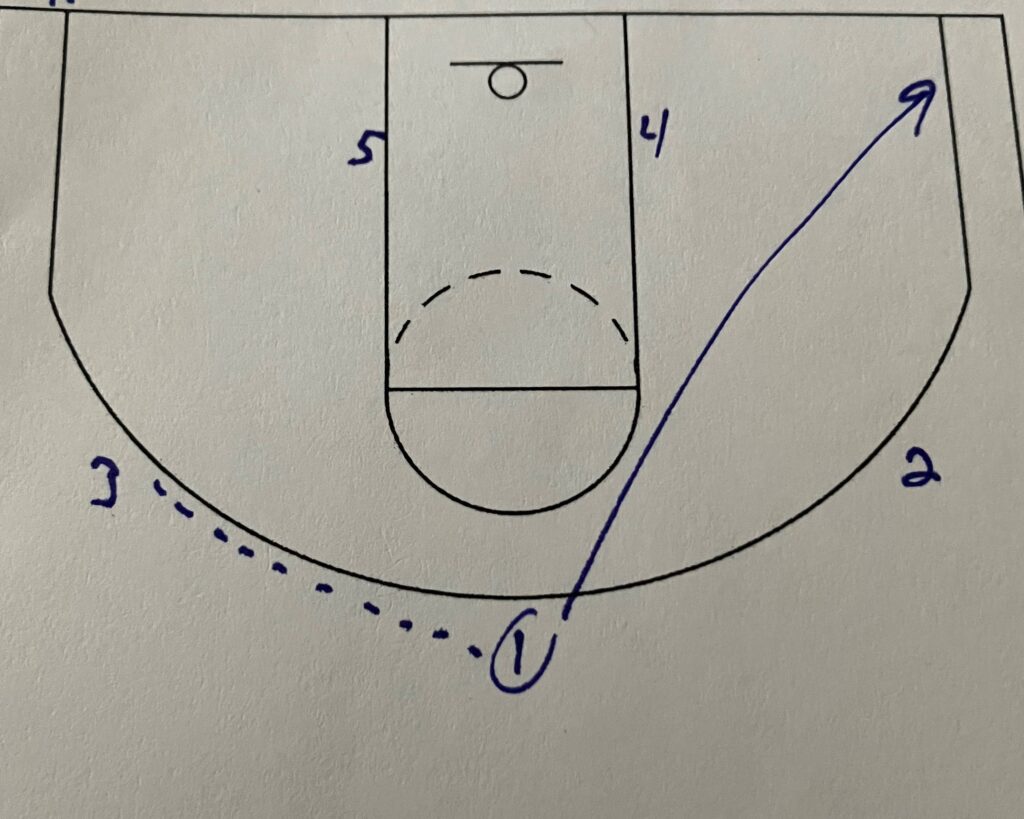
The offense starts in a standard 1 guard at the point, two wings, and two bigs on the blocks. The point(1) enters the ball into the wing and cuts to the backside corner. It does not matter which side the ball is entered into. The point(1) cutting backside frees up as much space as possible for the pick and roll.
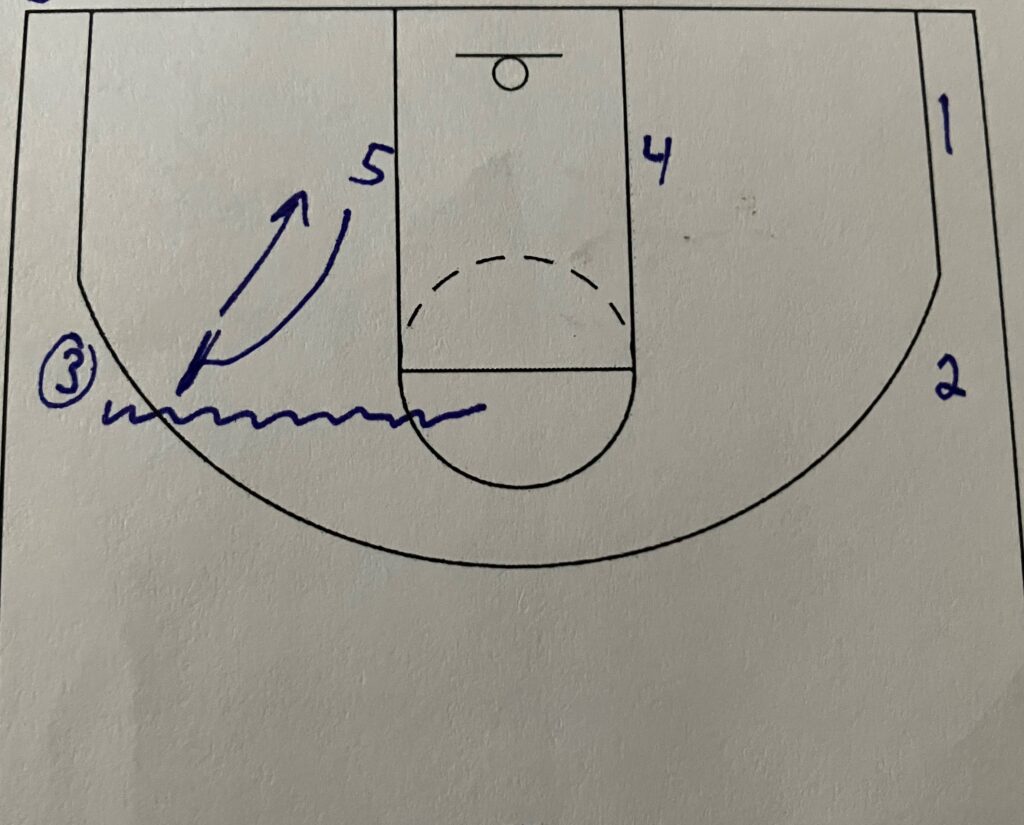
And now the ball screens start. The center(5) comes up and sets a ball screen for the forward(3). The forward(3) attacks the middle of the floor. There are 6 options to score from here.
- The forward(3) takes an elbow jumper.
- The forward(3) takes the ball all the way to the basket for a layup.
- The forward(3) passes to the center(5) on the roll for a short jumper or layup.
- The forward(3) passes to the big(4) on the opposite block because the defender stepped up to help the drive.
- The forward(3) passes out to the guard(2) for a kick out 3-pointer.
- The forward(3) passes to the point(1) in the corner for a kick out 3-pointer.
All 6 options are getting a shot right from the pick and roll. The forward(3) has to read the defense to determine which of the options to take for the scoring opportunity. It will all depend on how the defense guards the pick and roll as well as who steps up to help the drive. There is a 7th option and this option keeps the play continuing the motion of the offense.
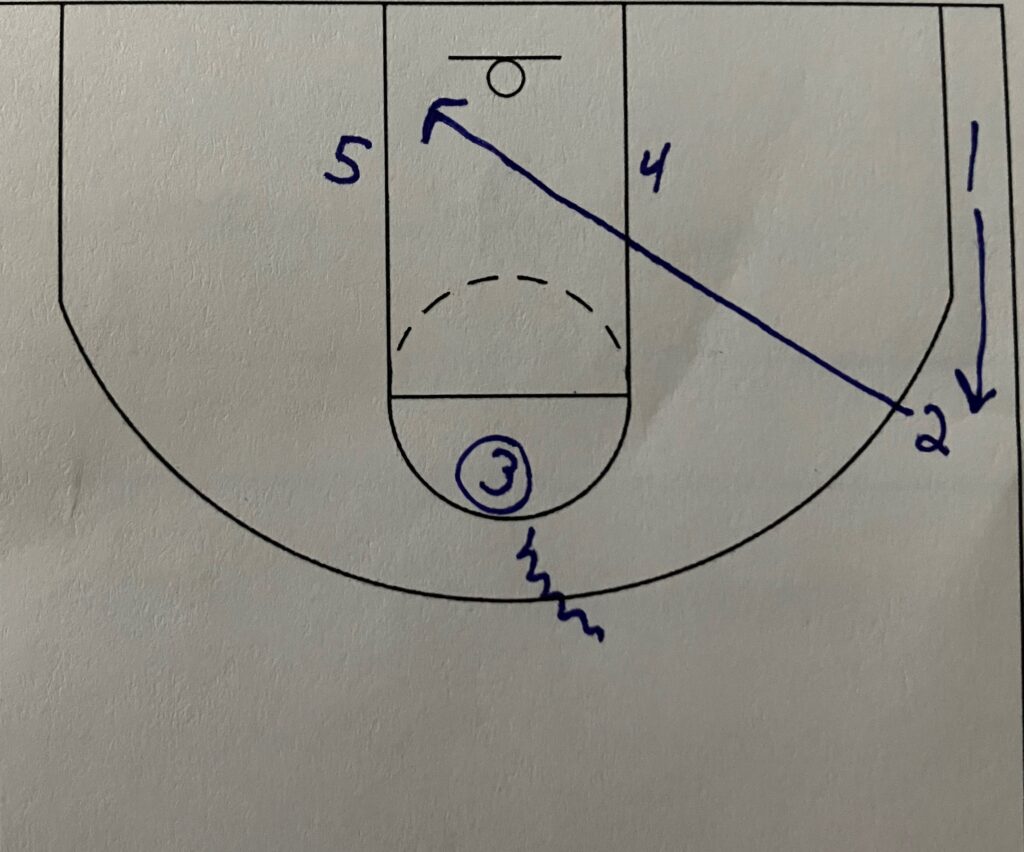
The 7th option is for the driver to back dribble back out to the 3 point line. This signals to everybody else that no option for scoring happened. On the back dribble the guard(2) cuts for a possible backdoor but it is to help clear out the side. The guard(2) can go above or below the bigs but the cutter is going to eventually end up on the opposite wing.
The point(1) moves up out of the corner on the cut. The three guards(1, 2, 3) must all be watching each other because the movement needs to happen quickly. The back dribble, cut, and move up the sideline needs to be quick. This move up the sideline helps to set up the next screen in the offense.

And now the offense is going to start the repeating motion. The cut from the guard(2)2 finishes with the player going to the wing. The forward(3) passes to the point(1) coming up the sideline and cuts to the backside corner. Before the pass to the point(1), the offense is back into the 1-2-2 formation it began in. This is having the motion but the end of the motion starts the beginning of the next rotation of the motion offense.

And here is the 2nd ball screen. The ball is on one side of the floor with only two offensive players. The ball and the screener. The other three players are on the backside of the floor. The same 7 options, 6 scoring and 1 motion, are available again. The two wings(2 and 3) are stretching the defense length wise looking for a kick out 3. If the guard(2) defender does not follow him along his cut then he has a good chance to be open for the kick out 3. The point(1) is looking to drive off the screen. And the bigs are staying close to the rim.
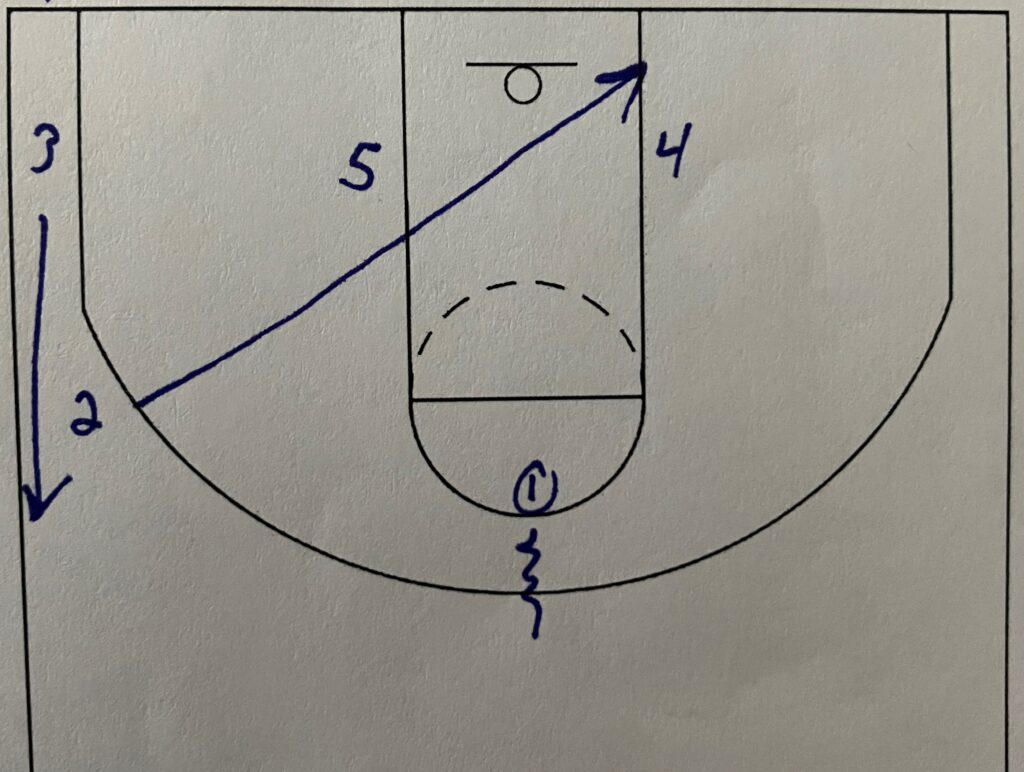
This is the last piece of the motion offense before the 3rd cycle begins. The point(1) back dribbles, the guard(2) cuts through, and the forward(3) cuts up the sideline back into the original formation. From here the offense will continue with ball screens until 1 of the 6 scoring options happens.
Conclusion
This motion offense is not for every team but there are teams who would be very difficult to guard in this offense. Before any personnel options, the offense is going to force the defense to defend ball screens. If the defense is unable to defend ball screens, then the offense should get any shot they want. On the personnel side of things, this offense will be best used with two really good ball handlers. One really good shooter. And two bigs who can screen and finish around the basket. Once the motion starts, the ball should stay in just 2 players hands most of the time.
Now there are adjustments to be made once the standard motion changes, for instance if a kick out is made but the defense prevents a shot. If that happens, then the guard without the ball cuts to the other side and the big comes up and screens and the motion continues. While this will happen, it is not very hard to get the play working again.
At the youth level, this motion would be a good offense to run sometimes. The reason I say sometimes is because the bigs should be more involved with chances to have the ball in their hands at some point or they will not develop. Likewise the two main players handling the ball and coming off the ball screens should be changed to develop all players and not just rely on two main players.

